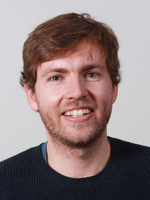
Dr. Nils C. Prieur
ML Engineer / Earth & Planetary Scientist
- Oslo, Norway
- Field Geospatial Norway
- Github
- Google Scholar
- ORCID
You May Also Enjoy
Transition to YOLOv8, always improving the algorithm, collecting more labels…
3 minute read
Published:
Bonjour, everyone! Time feels like it’s slipping away faster than ever these days. With paternity leave in full swing, finding work hours here and there has been a challenge (and honestly, it’s hard not to get distracted by Baby Finn’s cuteness). Despite the chaos, I’ve managed to make a major leap forward in the project: transitioning from Detectron2 Mask R-CNN to YOLOv8. Let me tell you—it’s been a game-changer.
First manuscript accepted! Moving back to Norway after two years in the US
2 minute read
Published:
Let’s go!!! 🎉 After nearly two years of hard work, my first article for the BOULDERING project has been accepted in the Journal of Geophysical Research: Planets! You can check it out here. This has been a long road, but also an incredibly rewarding one. Over 33,000 boulders were collected across more than 750 tiles/images from three planetary bodies: Earth, Mars, and the Moon.
Wifey at Stanford now! Baby Boss incoming in September
1 minute read
Published:
Big life updates, everyone! Siri is now at Stanford! Thanks to a fantastic program from the Norwegian Research Council (NRC), postdocs already involved in NRC projects can apply for a research stay abroad for up to a year. The NRC covers the salary, and with a high success rate for these grants, it’s a great way to build international collaborations. After some searching, Siri found a group at Stanford doing work closely related to her research at NMBU in Ås. A few weeks of visa wrangling later, she’s here!
One Step Forth, Two Steps Back.
3 minute read
Published:
Hey everyone! The past few months have felt like a game of two steps forward, one step back, but progress is happening—slowly but surely. Most of my time has been spent processing and fine-tuning the orthoimages collected during fieldwork and improving the prediction workflow for the Mask R-CNN model.